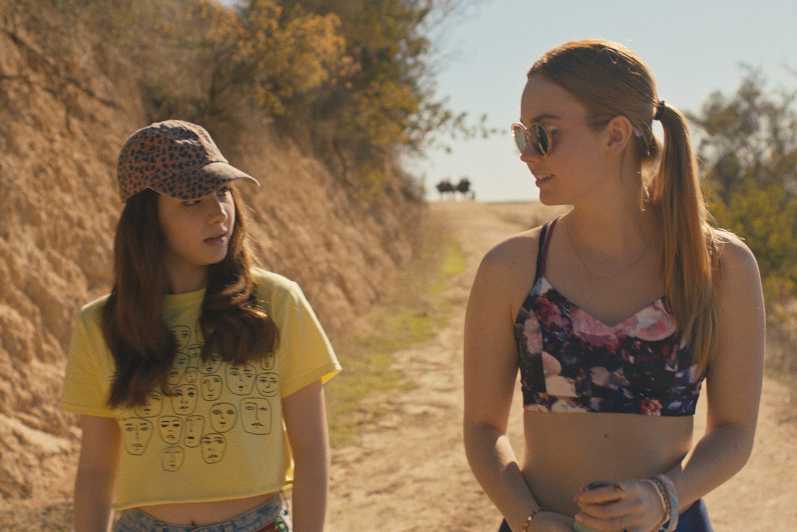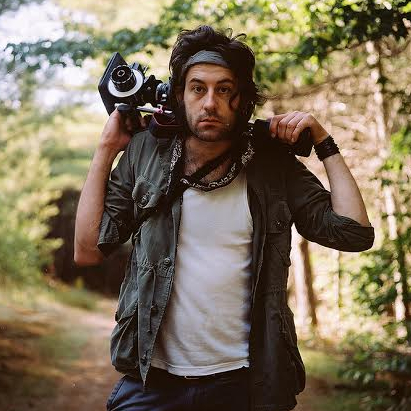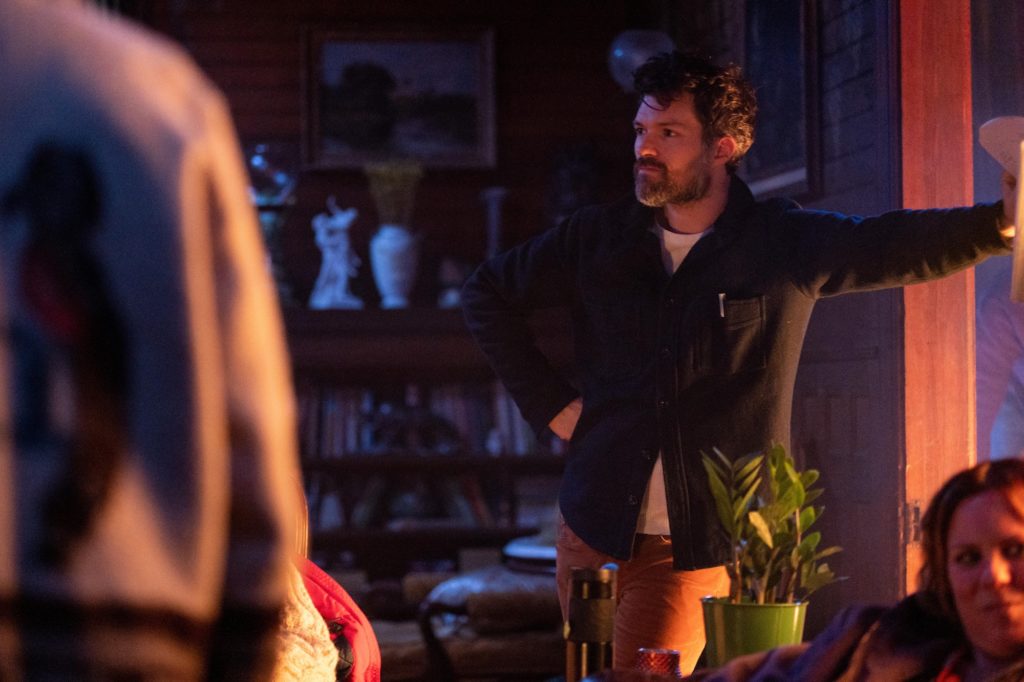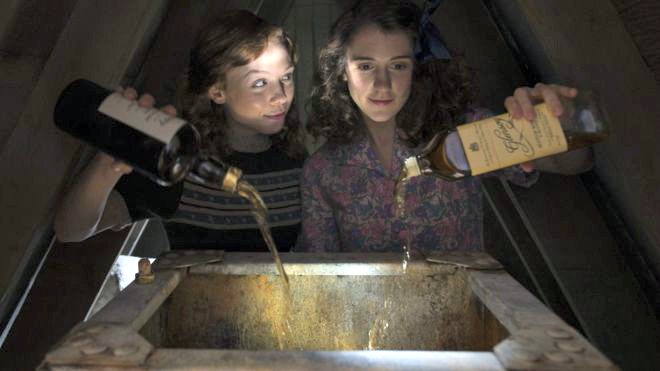As an accomplished cinematographer, BENJAMIN KASULKE has lensed award-winners and festival and arthouse hits for mainstays of indie filmmaking. His resume includes Mike Birbiglia’s The New One and Thank God for Jokes, Lynn Shelton’s Your Sister’s Sister and Humpday, Guy Maddin’s Seances and The Forbidden Room, Joshua Leonard’s The Lie, Colin Trevorrow’s Safety Not Guaranteed, Katie Aselton’s The Freebie, and Joe Swanberg and Greta Gerwig’s Nights and Weekends. Kasulke landed a Spirit Award nomination for Megan Griffiths‘ The Off Hours and won the Slamdance Film Festival’s Kodak Vision Award for Shelton’s We Go Way Back. In 2012, Variety named him to their list of 10 Cinematographers to Watch. But his extensive work behind other directors’ cameras was just a part of what Kasulke wanted to accomplish in his career.
After nearly 15 years as a professional DP, Kasulke set his sights on directing. When he received a teen comedy script from actor/writer Hannah Marks and writer Joey Power, he found the directorial debut project he’d been looking for. BANANA SPLIT follows April (Marks) as she spends the summer after high school graduation becoming fast friends with Clara (Liana Liberato), who happens to be dating April’s ex-boyfriend Nick (Dylan Sprouse). Banana Split premiered at the 2018 LA Film Festival, before going on to screen at the Toronto International Film Festival, Seattle International Film Festival, the Independent Film Festival of Boston (where it won a Special Jury Prize), and the Vail Film Festival (where it won Best Film).
With distribution from Vertical Entertainment, Banana Split is available On Digital and On Demand March 27. We talked to director Benjamin Kasulke about his new film, his transition from cinematography to directing, and more.
——
COLIN McCORMACK: You’ve had this successful career as a DP, but how early into it were you thinking about making a move toward directing?
BENJAMIN KASULKE: I think early on. I’ve always loved shooting and I’ll keep shooting as long as I can because I love it so much, but I want to do both things. I was always doing shorts and music videos here and there under the radar and it just seemed like directing was such a dream. Cinematography was also a dream, but it was a lot more practical to realize. So I had four or five years where I was just shooting, shooting, shooting all the time trying to absorb lessons. I didn’t really feel qualified to direct. I knew I wanted to do it, but it took a long time to get in the mind space of, I’m on these sets all the time with all these different directors and I’m learning and learning. Five or six years into that, I started to feel like I was getting lessons that were useful and that I might actually be okay trying this out and not totally failing. That idea of self-education on sets, working with other collaborators as a DP, that coalesced a lot more over the last seven or eight years. That’s when I had a much stronger drive to finally move towards directing.
CM: Did that comfort [with directing] coincide with meeting Hannah Marks, or did you come close to directing a feature before Banana Split?
BK: I tried to manifest a feature; I was working a lot on different television series trying to put it out there that I wanted to direct as well and shoot with a lot of different collaborators. I put it out in the universe. Hannah gave me the script and I thought she just wanted notes for Banana Split. We’ve been friends for a long time and have shared a lot of projects and gotten notes from each other to see what was working and what wasn’t when we were writing things. I really thought she just wanted notes and so when she told me she was looking for a director for it – because she was in the middle of making another film – it was kind of a no-brainer. Like, Oh right, of course! I’ve known her forever, I love her work. That was the first clear-cut time when somebody came out of the shadows with a script to hand out [laughs]. Before that, I was trying to put it out there, but there wasn’t a tangible first step of someone saying, “We have something that you might be able to pull off and tell this story,” until Hannah came forward with Banana Split.
CM: Did Hannah have producers already involved, or did you and her work together in getting producers attached?
BK: She had been working a bit with a company called Burn Later, out of Boston. Burn Later helped us and were really good with us for a while. They had a lot of irons in the fire and they needed people attached that had names. And we were in the infancy of getting this thing off the ground. So it was a few months of, We’re gonna go! We’re not gonna go. We got a person to cast! We don’t have a person to cast. Then Burn Later and Hannah and myself all coordinated with a company called American Indie and American High, which were based out of Syracuse.
It was a long unwieldy path to that, but the bottom line was that I had an upbringing for the first few years of my life in Syracuse, New York, and had been in the area. One of the producers at American High [Jeremy Garelick] was looking for Syracuse-based production people and wanted to meet me to see if he could woo me over to Syracuse to shoot some films for him. I told him I was still shooting, but I was really picking my projects pretty specifically as far as cinematography and I was attached to [direct] this movie. He said, “Well, what kind of movie?” I said, “It’s a high school movie.” He said, “We’re making a lot of high school movies in Syracuse and we know that script.” One thing led to another and Burn Later started to work with American High, and then American High became the physical production company. So we ended up shooting this high school movie with American High, who was specializing in high school movies. We did a lot of it in Syracuse, New York, and then filmed a lot of the exteriors in Los Angeles.
CM: What was it about Hannah’s script that excited you to sign on?
BK: I think the biggest thing is that I’m a sucker for really good jokes. Hannah and Joey Power, her co-writer, had crafted something where the humor was wise beyond its years. I’m the tail-end of Generation X, so I grew up on John Hughes. The good parts of John Hughes still resonate with me, which deal with coming-of-age stories where people are very articulate about what they’re doing and why. I think Hannah had made something that A) was very, very funny, B) had this great gender-political agenda under all of the laughs, and C) took the reader and now the viewer through a self-aware coming-of-age story that feels universal.
I love comedies, but I have a hard time with comedies that are sort of a mixtape of jokes and then it’s over. Sometimes I don’t really know who that’s for. What I loved about the script that Joey and Hannah put together was that they had a lot of laughs but they also had this wonderful dramatic arc underneath it that seems universal and approachable. For me, as a storyteller, it was also about a generation that was behind mine; I’m the tail-end of Gen-X and they’re the head-end of Millennials. The experience of being a teenager now has universally all of the same anxieties and existential angst, but the day-to-day look and feel of it is completely different from what I grew up with. Hannah and Joey really handle the texting and living online and cyber-stalking and cyber-bullying really well and tackle all this stuff that feels timely and also universally approachable as a dramatic piece.
CM: Before you started production, did you take any lessons – either things you picked up in passing or by getting specific advice – from any of the directors you’ve DP’d for in the past?
BK: I don’t know if I made a lot of calls as far as, “Hey, how do I…?” with anybody, but I think almost every single day there was another idea I pulled from a director I’ve worked with. In particular, in the approach to actors and talent, I did a lot of things with Lynn Shelton and with Megan Griffiths, who are these very wonderful, actor-centric and performer-centric directors. They specifically know how to create a set atmosphere that pulls the nuts-and-bolts drudgery and machinery out of the equation of making a movie in order to leave room for performance. It’s important to me anyway, but I think it was extra important for a film that was autobiographically written by and starring Hannah Marks; she was living out her own story – a dramatized version of it – and I needed to make sure she was comfortable. I was a little bit older than most of the actors in the film, so I wanted to make them feel taken care of and heard and looked after. So a lot of the set etiquette and work atmosphere that I picked up from Lynn Shelton and Megan Griffiths helped quite a bit in letting a lot of the younger actors know that I was there for them, I was paying attention, I wasn’t going to let them fall, and I was going to take care of them in the edit.
It’s an indie movie, and like every indie movie, you’ll hear that there’s never enough time, never enough money. You always want a full glass and you have to settle for three-quarters of it and you get the best three-quarters that you can. I also stole a lot from Hal Hartley, who I worked with quite a bit on an Amazon show called Red Oaks. Hal’s really, really good at planning out very specific and minimal coverage that tells the most amount of story in the fewest amount of cuts. That kind of preparation is super helpful when someone hands you a day’s work and it’s 10 pages and you’ve got 12 hours and a child actor that can only work so many of those hours. Suddenly, the 16 setups you thought you wanted for the scene perhaps turn into four. And they have to turn into the right four. Going into a situation like that with a lot of preparation and knowing what’s important to a scene is scary for some people, but for someone like Hal, I learned if you really distill the essence of the scene to find what four angles you need – or perhaps you can define it in two – it can be inspiring. Because if you only have two angles or four angles, all of a sudden you have time, and that’s the real commodity on an indie film set. Rather than scrambling to move the camera 16 times, we’re moving the camera four times but scrambling to get 16 variations on performance or making sure the actors are feeling like they’re getting what they want out of the experience collaboratively. This sets the stage for performance to take the front-seat once we’ve lit the set and placed the camera. Then there’s also the [question] of, “How many times do we need to place the camera really to get this done right?”
I’ve worked a lot with David Gordon Green over the years and he’s got a way of staging scenes that seem like they aren’t much on the page. In Banana Split, it doesn’t have a lot of action in the screenplay itself. It’s a lot of talking, it’s a lot of humor and drama, people hanging out, sitting in cars. I’ve worked with David on a number of occasions where we had things on the page just look like two people talking in a room, but he has a wonderful way of working with the cinematographer and the actors and the production designer to make sure the frames at least have a lot going on in them. Even if you’re riveted by the comedy or the dialog in a closeup of someone talking to someone else, at least there’s something else going on visually. On the cinematography side, for me, we’re always trying to find visual metaphors to make images that are bigger than the sum of the parts. It’s just thinking along the lines that if you stage or block a very simple scene in a way that is aesthetically interesting, it will only allow for a deeper read on the audience level.

CM: Speaking on that idea of the visual component, what went into your decision to not wear both hats of cinematographer and director?
BK: Yeah, I’ve mentioned at some point I’d love to try that, but honestly, it was the first movie. I knew it was going to be very, very fast. I knew we would be shooting in Syracuse, New York, so I wasn’t going to have the usual team that I would normally have around me. I’ve been lucky as a cinematographer to have these great repeat teams in New York, LA, Seattle, Paris, wherever I’ve been able to work over the years. That crew that I had a shorthand with and had veteran status together, I knew weren’t going to be around. I knew it was going to be a lot of coaching and modifying performance and adjusting things. And most importantly, I knew because it was a comedy it was going to be very difficult. Comedy to me is very, very hard to pull off well. You can make someone laugh for a few minutes, that’s wonderful, but to make someone laugh and then still have a dramatic arc that is followable and approachable is a whole different thing. I knew I could try to wear those two different hats, but neither of them would fit very well [laughs]. So I decided we needed to find a DP that understands the film and understands the aesthetics we were going for. I got very lucky in that Darin Moran is a wonderful cinematographer based out of Portland, Oregon. We interviewed a lot of people and Darin understood visually what the movie was about and understood the lady-centric politics of it and it was a really wonderful collaboration.
CM: Pacing makes such a difference in comedy as well, so I was curious about your experience in the editing room. Was that new territory for you to venture into?
BK: I’d edited a lot of things in film school and I’d been in on edits of films I’d shot – especially the zero- to micro-budget films over the years that were made by close friends – I would always be there for notes and cuts. But this felt different. I was sort of dreading it because my life is usually out on a set somewhere and I’m used to having my workday be to show up on set, have 35 conversations at once all day, and then go home. I was dreading the edit because I didn’t know how I was going to sit still and watch this thing day after day and create something out of it. I had a similar version of [this feeling] for writing. Even creative writing, the sedentary nature of it freaks me out.
But I was lucky enough to work with Brendan Walsh, this amazing editor. He’s worked with everybody; he came out of the Paul Thomas Anderson world and worked with Wes Craven for a long time. He had a way where the editing wasn’t sitting and watching something from start to finish, it was like composing. Composing music and picture and dialog and sound and time. That’s what editing is, but he had a way of doing it that felt a little more proactive than what I was thinking it was going to be. I had a lot of dread walking into the edit room, and I think we originally had 14 weeks and then we expanded it out to 18 weeks, maybe a little more, of editing. What started as, “Oh my God, this is going to be brutal. I don’t know how I’m going to survive it,” I couldn’t get enough. If nothing else, this experience pulled me into the editing room and let me embrace that part of the creative process more than I had in the past. I think maybe after 15 years of shooting, I thought my efforts in making a film would be over after I turned in all my equipment on the last day of shooting; that I would sort of tag out and maybe come back and give somebody some notes and advise them on a cut. This just opened up a whole other avenue of creative expression.
CM: What do you have going on next?
BK: I’m reading a ton of stuff, writing a ton of stuff, and trying to figure out what the next thing is. I want to do another feature and am applying for scripts. I don’t have a specific one in mind yet, but there’s a big stack on the nightstand I’m plowing through.
CM: Maybe during this pandemic, you’ll have time to get through that stack.
BK: Totally. It’s a lot of reading and a lot of writing right now.
__
A big thanks to Benjamin for talking to us about BANANA SPLIT. Follow the film on Twitter, Facebook, or Instagram.
If you’re an independent filmmaker or know of an independent film-related topic we should write about, email blogadmin@sagindie.org for consideration.




